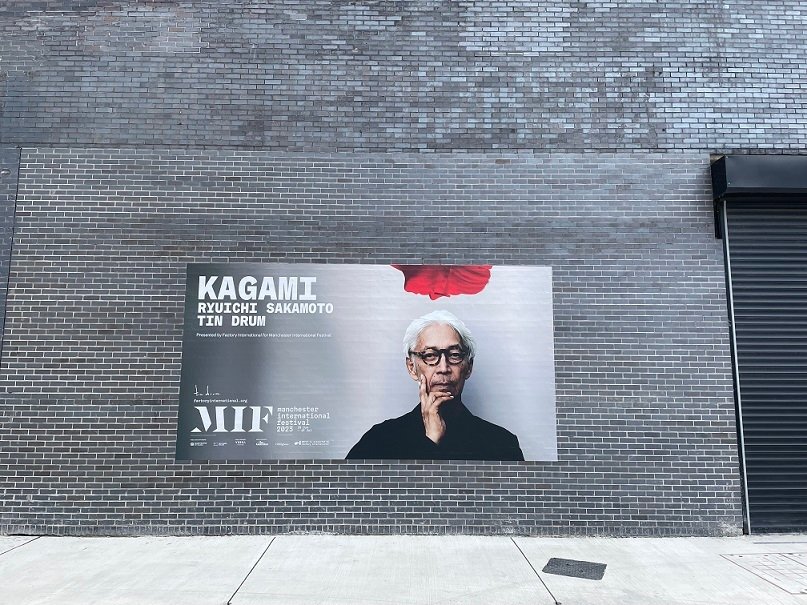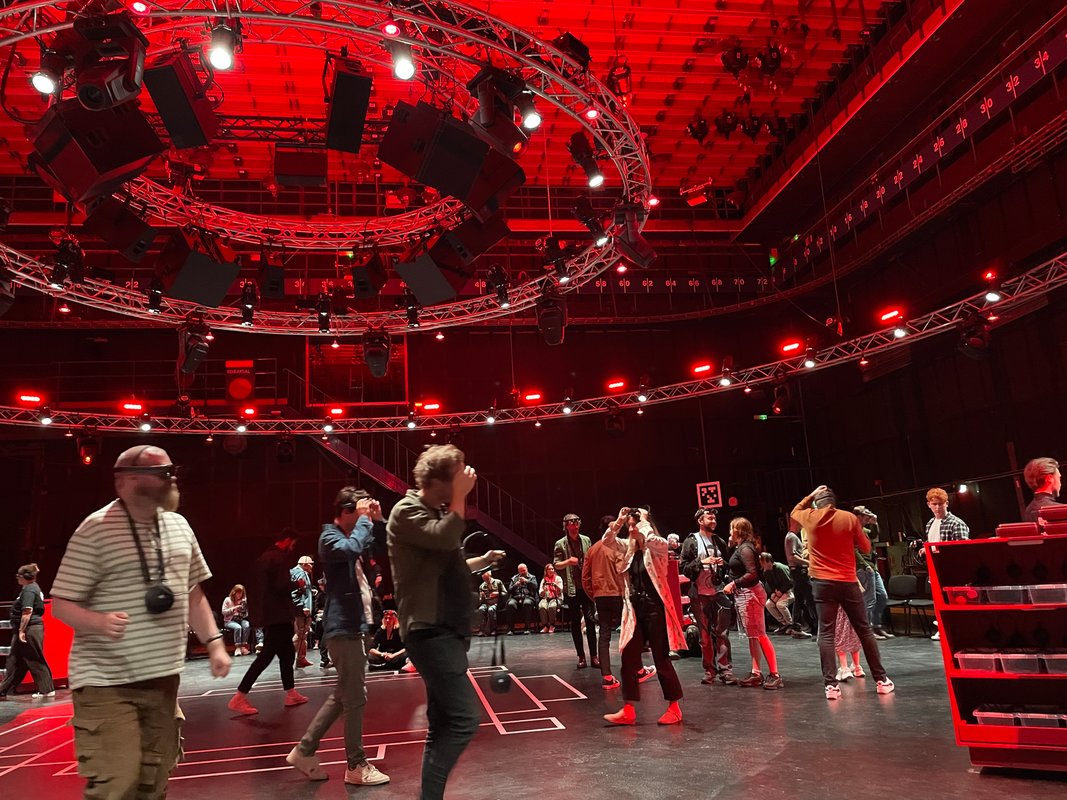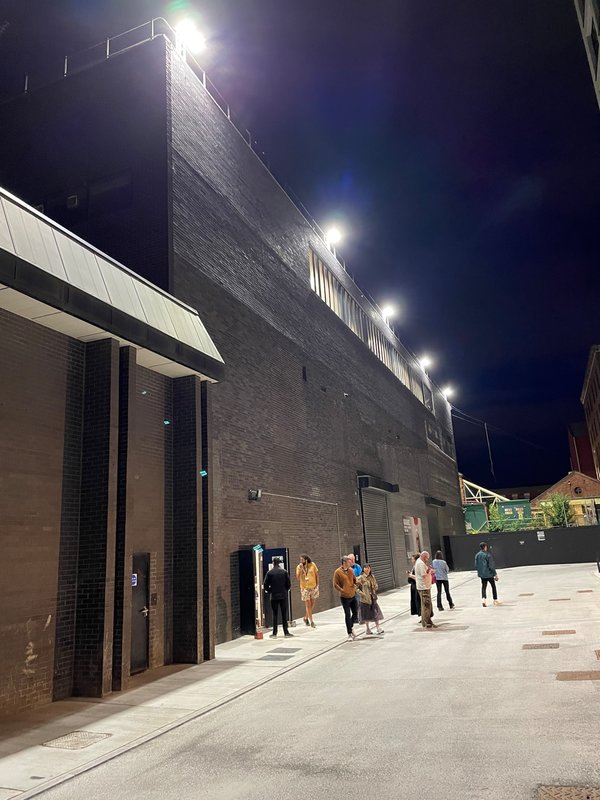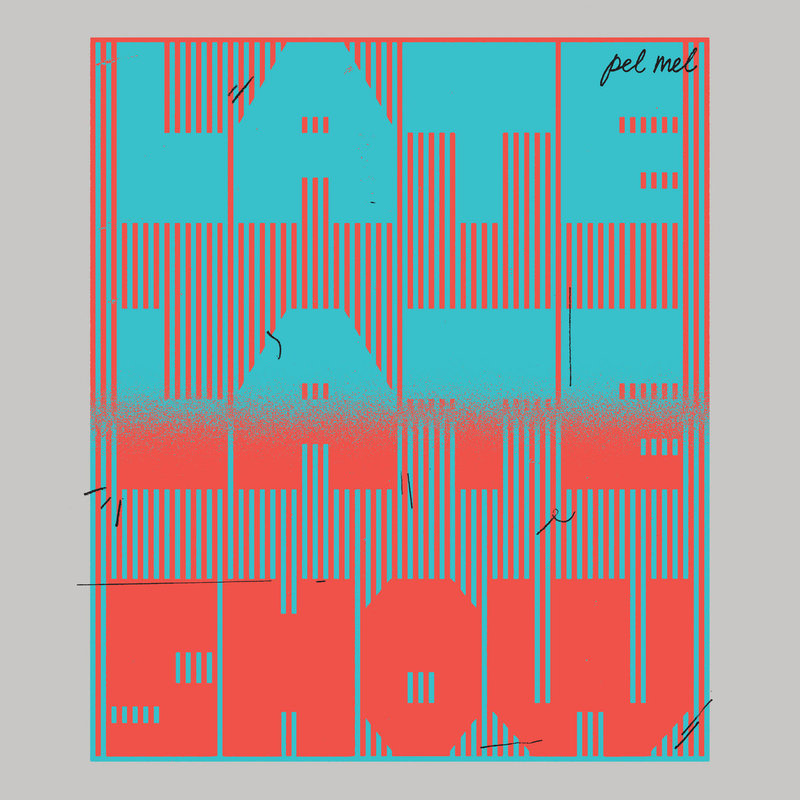
It's been a few weeks now since I attended this show at the recent festival, so some time has passed to compute the experience a bit more. The review below was written pretty much straight afterwards though and the result is the same. This show, concert, installation...whatever description of the experience people care to give it, was both unique, thought provoking and memorable.
Since its inception in 2007, Manchester’s International Festival has premiered new and innovative art from across the Globe. It has worked with such diverse and well known contributors as Damon Albarn and Jamie Hewlett, Rufus Wainwright and Marina Abramovich, as well as Massive Attack and Laurie Anderson. The festival has also prided itself on making space for new and upcoming local artists to cut their teeth with the international big names on show, as well as providing a platform for diversity and inclusion.
Given the recent sad passing of Riyuchi Sakamoto, additional focus was always going to be on the Kagami ‘concert’ put together in collaboration with Tin Drum. Promotional material describes the show as a new kind of live endeavour, fusing dimensional moving photography with the real world to create a never-before-experienced mixed reality presentation. What that actually means in reality is certainly novel, often visually impressive and at times deeply moving - especially so, given the context.
Entry to the event space is via a corridor in the old studios that have survived the recent high rise explosion around the Deansgate/Salford end of Manchester city centre. First there is a reception room of sorts. The high ceiling enables huge images of some of Sakamoto’s life experiences to be hung from the walls. A short film is shown on repeat of his experimental journeys into sound. From the sublime image of him recording running water under ice in the Arctic Circle to the slightly comic, as he listens to the rain with a bucket on his head. The sense is that music, rhythm, sound is all around us and is there to be enjoyed in all its forms. Nature and machine, combining to tell us something about who we are. But this is just a holding pattern. The impatient among the crowd fidget, but everyone wonders what will happen next when the film begins to repeat. But this is short-lived, soon there is direction to a second room.
This one is larger, with a circle of seats around a central marked performance area. Empty of course. For now. Headsets are distributed to the congregation. Once in place, a rotating red cube is now visible in the centre of the room, giving a taste of the visual experience that is to come. Instructions are given. Photos are allowed but essentially pointless. Movement is allowed. But, be careful of collisions with fellow travellers. There’s a weird, almost tension, in the air about what is going to happen next. Then it begins.
Out of the darkness appears a seated Sakamoto. He is solo at a Yamaha grand piano. Then the music begins. He’s there but also not, an ethereal presence. The motion is smooth and the piano sound, clear. His fingers move across the keys. Seated in a circle, all the focus is on this figure, who at the same time is not really there. It’s an unearthly experience.

The music takes the form of a series of solo piano pieces. For the first few, no-one in the audience moves. Standing, walking around is allowed, and eventually, one by one, people begin to explore the space. Moving forward, to check the reality, or otherwise, of what their eyes are telling them is in front of them. The movers are visible in peripheral vision, but when they locate themselves in front of the seated, they disappear into the blackness. Transparent to what is in front of the eye, because they are beyond what is being seen, not between it. It’s a strange and unnatural experience to begin with. But in standing and then becoming a mover yourself that caution has to be taken, as they are really there after all.
The dynamic experience is something else again. The piano-bound Sakamoto can be circled entirely. He is at times surrounded by clouds of smoke, falling leaves, and criss-crossing beams of coloured light. All the while the audience is immersed in what is going on around them. They move through the room and experience it, immersed completely. They are surrounded by it.
A visual and musical highlight comes with ‘Merry Christmas Mr Lawrence’. A tree grows, branch by branch from the depths of the piano. Reaching upwards until towering above the audience. Then it fragments into pieces that fall, then rise up again, forming a sky full of stars that coalesce into planets. They decompose and fall past those watching, sinking to the floor, and yet the floor has gone. Now suspended in space, the particles float and mix, finally coalescing into the roots below the piano, who’s unmistakable notes continue to play. Finally, the roots extend upwards, through the instrument, completing their journey to where they began as a new tree before the music ends. It’s awe inspiring, emotional and unlike any previous visual or musical experience.
More visuals accompany the remaining tracks. Archive footage hangs in four panels that can be crossed and viewed from both sides. The closing comes with a gentle falling of raindrops, perfect spheres of light creating ripples across the floor. And then it’s done. Headsets are returned along with reality. Then the exit, via a fire escape and into the Manchester night, struggling to process what has just happened.
Is this the future of live music? Probably not entirely, it’s hard to see a time when the visceral experience and spontaneity that comes with live performance can be replaced by a pre-programmed machine recital. Plus this is an unfair comparison - this way of encountering music is altogether different. It is hard to imagine a more appropriate subject being at the centre of it though. No doubt the future will bring more exact facsimiles of lost musical icons for new fans to ‘experience’. AI’s involvement in art and the wider world is very much up for debate. Who knows, maybe it will even be able to customise a concert to the individual, merging the shared experience of the concert with one person's solitary taste. However, for now it just makes sense to put those things to one side and just savour the music and celebrate the beautiful genius of Ryuichi Sakamoto.



